
Mike Dilger’s wildlife spectacles
The broadcaster, naturalist and tour guide shares the most breathtaking seasonal events in Britain
We built this city
WOOD ANT NESTS
Discover a mini metropolis housing hundreds of thousands of social insects
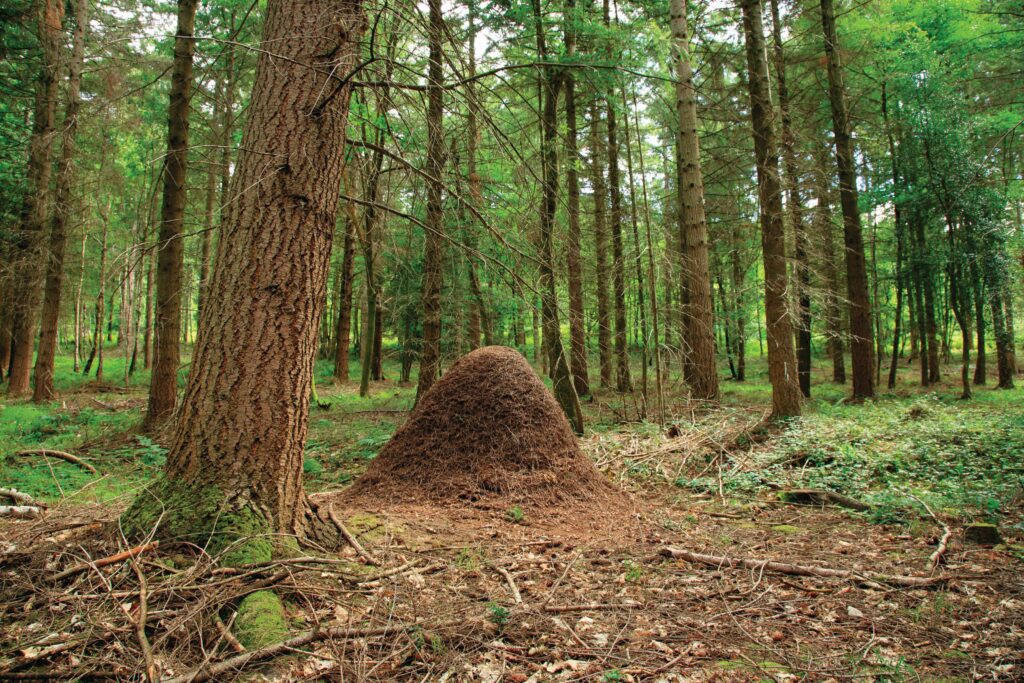
BRITAIN’S ANT FAUNA OF ABOUT 50 species is impoverished when compared to that of the tropics, with the famous biologist and ant expert E O Wilson once stating he could find as many species of ant on a single tree in the Peruvian Amazon as exist in the whole of the UK. However, what we lack in quantity we certainly make up for in quality, with wood ants surely the most charismatic of this instantly recognised but poorly understood group of social insects.
Of the six species of British wood ant, only three are commonly encountered: these being the southern, northern hairy and Scottish wood ant. While all look similar, they can be differentiated by the shape of and amount of hair on their heads. And except for a few places where the commonest species may overlap, perhaps the easiest way to know which wood ant species you’re trying to identify is to consider its location.
The only true woodland ants in Britain, wood ants are also the largest, with many of the workers reaching about 10mm in length. They also form the most populous colonies, with some nests thought to contain over a quarter of a million individuals, with all being the progeny of a single egg-laying queen. Reaching well over a metre in height, their domed nests on the forest floor are an impressive sight, and perhaps even more so when you realise that the structure may well extend by as much again below ground.
Composed of soil, twigs, leaves and in some cases pine needles, if the nest were to be sliced in half it would reveal a complex citadel of interconnecting tunnels, galleries and chambers. Constructed both to keep out rain while also intercepting the sun’s rays, the internal ambient temperature of the nest will be retained at about a cosy 25°C. From early spring onwards, the surface on the nest can become a hive of activity as thousands of wingless workers gather to ‘sunbathe’, before then carrying the absorbed heat back down below.
After a short period of inactivity in the depths of winter, the first few days of spring will also see the workers pouring out along special trails radiating from the nest. Researchers tracing these trails have found that they can travel distances of up to 100m from the ants’ base. As the extent of these busy ant highways effectively delineates the colony’s territory, this woodland real estate will be vigorously defended (by two of the commonest wood ant species) from any ants possessing a different ‘nest odour’.
Scouring across their territory, the carnivorous ants are on the constant hunt for prey, with caterpillars, flies, woodlice, beetles and spiders all subdued or scavenged, before then being consumed by the developing brood back at the nest. So effective is this hunting strategy that a study of southern wood ants in the north of England estimated that workers from a typical nest took as many as 60,000 items on a summer’s day.
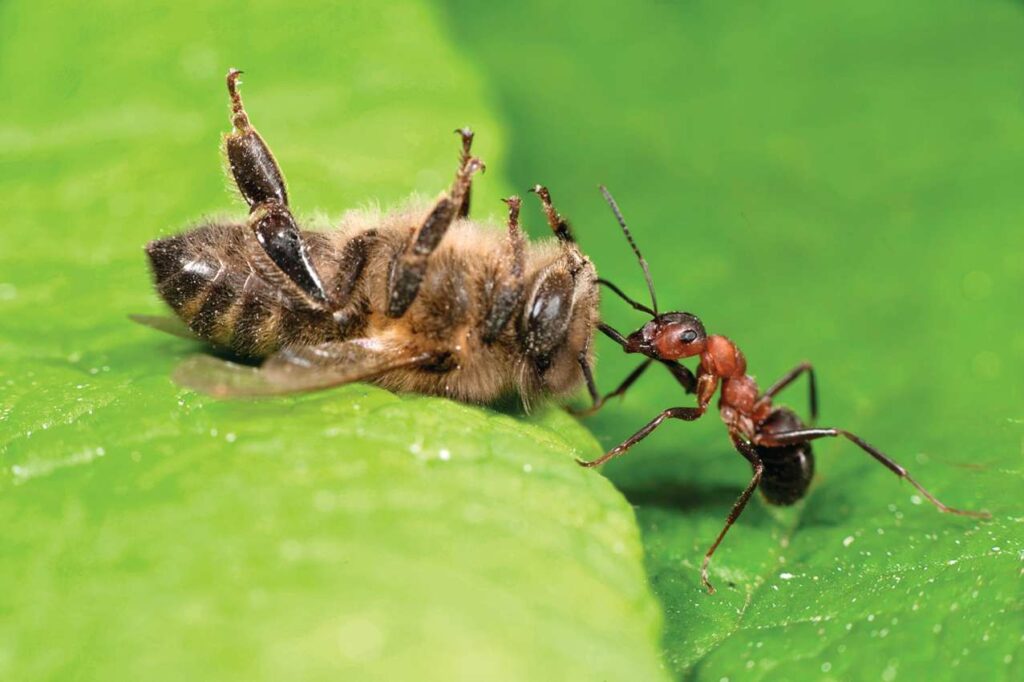
“The internal ambient nest temperature will be kept at about a cosy 25°”
The workers themselves, however, mainly rely on a sugary solution harvested from aphids. Tapping into a plant’s phloem to extract sap, the aphids end up secreting the excess, which is then collected by the ants as ‘honey dew’. In return for being ‘milked’, the aphids appear to escape predation by the wood ants and may even get a level of protection from the likes of hungry ladybirds. The quantities of sugar collected can be immense: over a quarter of a tonne (275kg) of honeydew sugar solution can be carried back in specially designed crops in the ants’ abdomens to a single wood ant nest in one season.
Subject to predation, particularly from green woodpeckers and badgers, the ant workers will defend their nest against potential intruders with three formidable weapons in their armoury. Like all ants, they not only have powerful jaws, but will also squirt copious supplies of formic acid at anyone or anything threatening to disturb the status quo. And if these fail, the ants’ ‘all for one, one for all’ attitude sees them quickly swarming over even the most determined of enemies.
Did you know?
The southern wood ant is also called the red wood ant. Workers will attack other ant species caught trespassing within their territory.
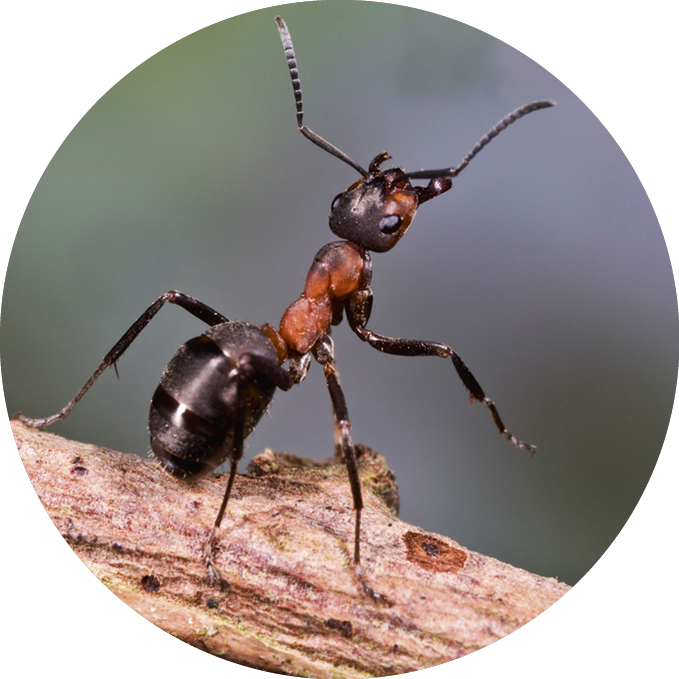
Top five places
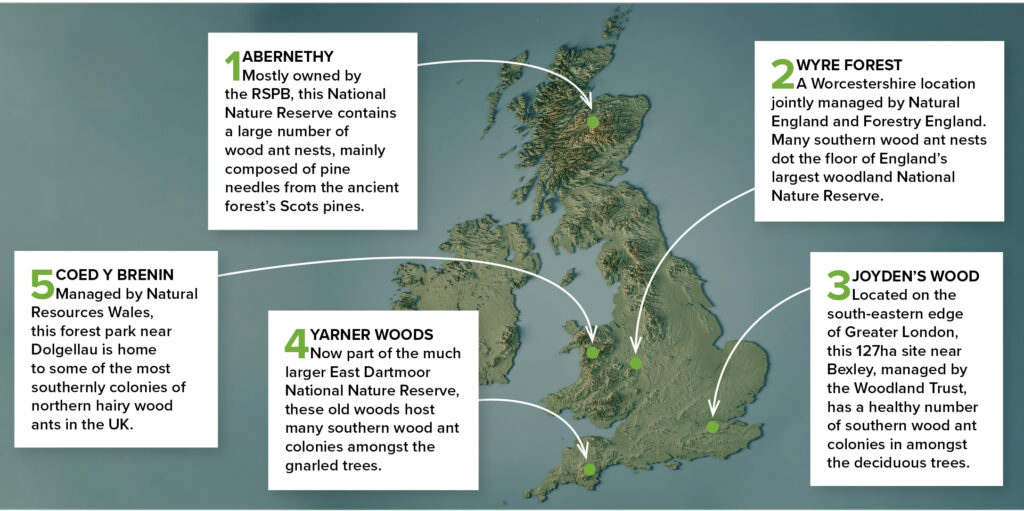
LOOK CLOSER
Nature’s gardeners
With countless invertebrates brought back to the nest each day, it can result in the formation of so-called ‘green islands’. Here, the leaves on those trees close to the nest can often remain virtually unblemished due to the removal of the vast majority of their insect ‘defoliants’.
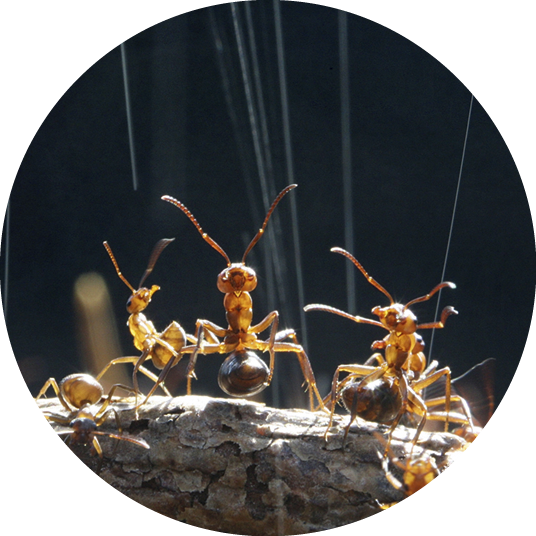
The acid test
Impress your friends by gently wafting litmus paper above a nest. Any wood ants present on the nest’s exterior will curl their abdomens before spraying the paper with formic acid, which amazingly turns it from blue to pink!
On the wing
Why not plan to go ant-hunting again in June? This is when the virgin queens and winged males will take to the air to mate. This aerial ant display appears remarkably synchronised across different colonies to ensure the next generation have a shuffled gene pool to prevent inbreeding.